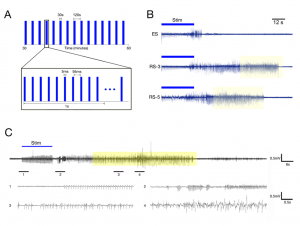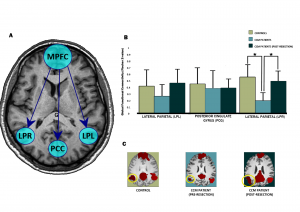
Hai Sun, MD, PhD
Associate Professor & Assistant Director of Research, Department of Neurosurgery
Epilepsy, Cerebrovascular & Skull Base Surgery
Please click here to visit Dr. Hai Sun’s laboratory website.
1. The Micro-connectivity in Temporal Lobe Epilepsy
Epilepsy is associated with several comorbidities, increased risk of mortality and decreased quality of life of 1% of the global population. Temporal lobe epilepsy (TLE) is the most common type of adult epilepsy and is often uncontrolled by medications. The cellular basis of TLE continues to evade researchers, in part owing to the difficulty in isolating specific cell populations during a seizure activity. Our lab is interested in the pathophysiology of temporal lobe epilepsy. In particular, we investigates the hippocampal neuronal circuits underlying the TLE and the roles different types of neurons in hippocampus in seizure generation and propagation.
The techniques we employ include optogenetics, chemogenetics and immunohistochemistry. We also apply digital signal processing and computational algorithms to EEG signals to help unlock the relationship between neuronal activities and changes in electrophysiological signals.

2. Neuroimaging and Brain Macro-connectomics
Our lab is interested in using advanced magnetic resonance imaging (MRI) techniques to study the brain networks involving in human cognition and how these networks are affected by diseases. The MRI techniques we employ include anatomical studies, diffuse tensor imaging (DTI), functional MRI (fMRI) and resting state functional MRI (rsfMRI). These imaging studies can also be combined with electrophysiological studies such as EEG and neuropsychological testing results to understand the brain networks in both physiological state and pathological states.
One of ongoing projects in the lab is to recruit patient subjects with moderate and severe traumatic brain injuries to follow them over time with imaging, EEG and neuropsychological testing results. The goals to identify biomarkers that can predict the development of posttraumatic epilepsy (PTE) among these individual. This study is funded by U.S. Dept. of Defense.
We also plan to apply these techniques to patients affect by disease such as movement disorders, Alzheimer’s disease, and epilepsy.
To learn about our neuroimaging techniques and ongoing projects, you can view some of our recent publications:
a. Brain connectivity in focal epilepsy.
b. Using DTI to differentiate different types of brain tumors.

3. Clinical Neurosurgery Projects
I conduct clinical studies in surgical treatments and outcomes of cerebrovascular diseases, skull base tumors, and epilepsy. Examples of the publications can be found here:

Please click here to visit Dr. Hai Sun’s laboratory website.